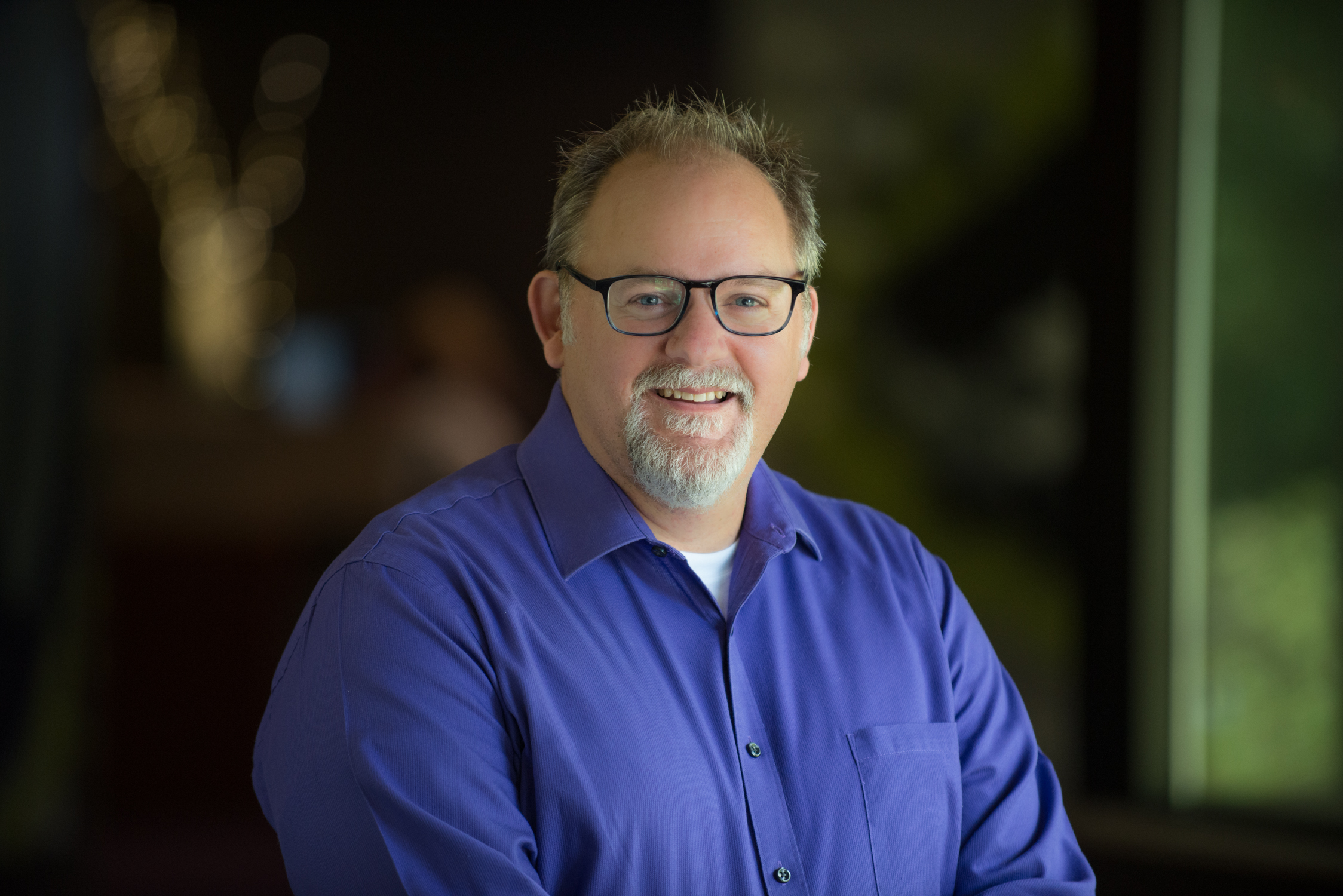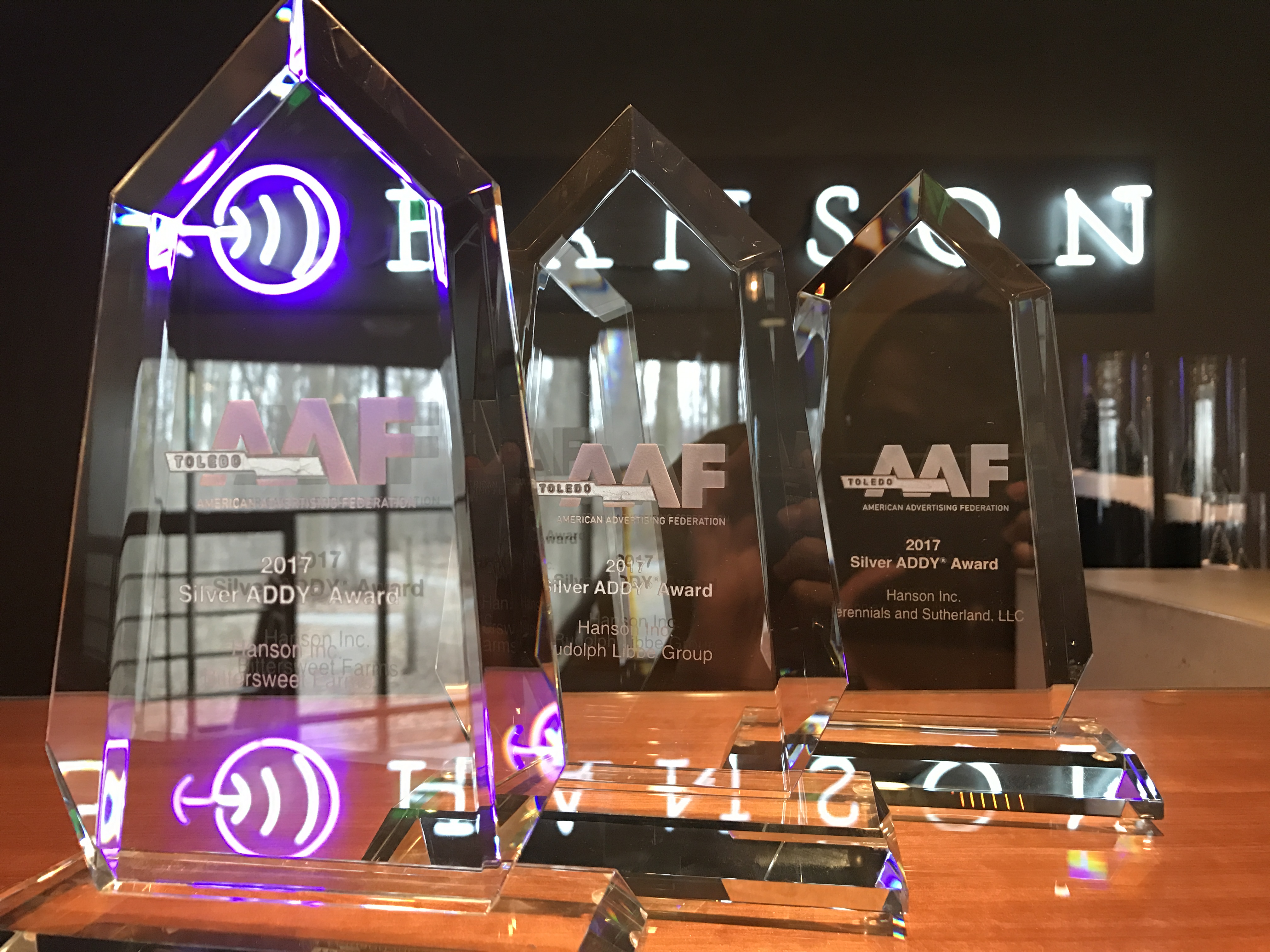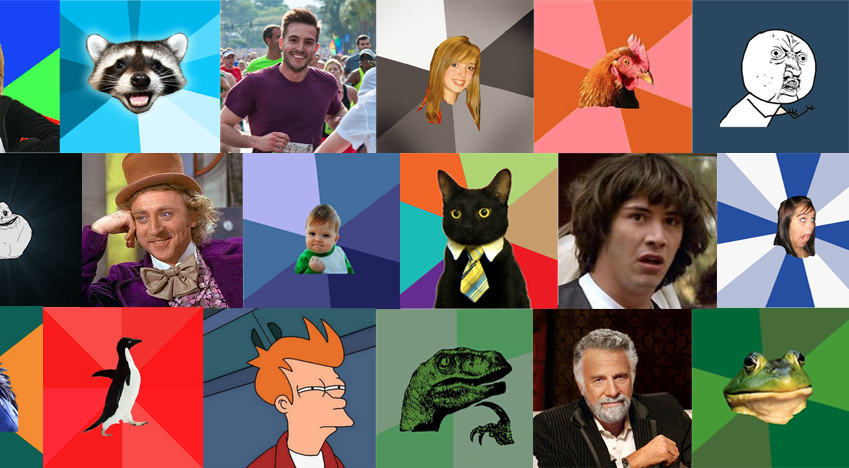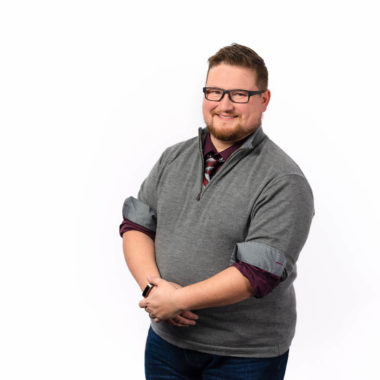What We Know Now: Mike Osswald
If you’ve read previous installments of this series, you know we occasionally interview Hansonites to learn a little more about what they do here and what they’ve learned since they started their careers. We’ve talked to Video Producer Krysta Adamczyk, Director of New Business Development Craig Hagenbuch, and Account Director Mike Hirsh, among others. Today we’re talking to Mike Osswald, VP of Experience Innovation.
Sally: You have a degree in marketing, and got your start in the typesetting and design business, I believe. How did you make the transition into digital strategy?
Mike: I actually started working when I was 14. It was when the MacIntosh first came out, and I was drawn to the fact that you could use it to make ads or fliers or brochures without cutting, pasting, and copying everything. I was drawn to this idea of being able to communicate visually. I was using PageMaker v 1.0 by 1985, and it was around that time this thing came to be known as “desktop publishing.” In one sense, it’s all I’ve ever done, this world of communication design.
And yes, I went to school for marketing and management, but at the same time I was starting my own marketing services business, working for the college newspaper and other projects. I never took a design class, but I know typography, layout, fonts, production—I think I know over 2,000 fonts! I worked for a while in prepress production, and several years in design production at a notable local agency.
But I was always a computer geek. So here I was doing communication and doing print things, and then the internet happened. And suddenly we realized we didn’t need to do all this work just to make something that became outdated as soon as it was (expensively) printed. And we can market to everyone in the world.
When I came to Hanson in 1998, I effectively left “print” behind. As limited as things were back then, it still was amazing to me. I loved how digital changes so rapidly. I had done 10-12 years of print-based production, but digital made sense to me. I could do things immediately and make changes quickly. So I set out to do a lot more of that.
Sally: So what was Hanson like when you first started?
Mike: When I joined Hanson, we were just at the cusp of it all. I did account management, strategy, and some project management and production, but it’s funny because I can’t remember what my original title was. But here’s what we [as Hanson] did know: in order to make a website, you needed the same assets as you do for the print world (photos, text, headlines, multiple pages, and structure). People know how to turn the pages of a brochure. They know how to absorb information from things in the printed world. But in the hypertext world, where you can click around and go to different places, people didn’t have the same roadmap. What we realized was that people can start wherever they want and go in whatever order they want. That is super powerful for the user—but it puts all the onus on us as marketers to try and control the experience. We have to be useful, we have to be relevant, we have to connect with them in meaningful ways. Our duty as marketers is to help them go where it’s most beneficial for us. And back then, everyone was trying to understand how to do this—so it was super exciting that everything was being done for the first time.
Sally: So you’ve been a part of the evolution of digital from the very start. Is there anything that particularly surprises you about that today?
Mike: It’s hard to think about how different it is today when you’ve been doing it all along. I guess I’m surprised that as much as digital has grown in scale—meaning you can be more agile in your planning, spending, and marketing approaches—many businesses are still making a lot of print, TV, and even radio. All channels of media are still seen as important, and they’re still planned out on yearlong timescales. Sure, the content and context of those other forms of marketing have changed, but a real transition completely away from old ways of marketing planning has never entirely happened. Smaller businesses have made more use of research, more frequent campaigns, and more flexibility in spend, but it seems that few big businesses have really taken advantage of digital in everything they do.
Sally: Given what you’ve learned thus far, what is something that bugs you about the internet world today?
Mike: Some people say that “kids these days” don’t have an attention span, and everything has to be small snippets. I don’t believe this. I think the situation is that we’ve created a world with such an emphasis on making content that any click delivers millions of results. So it’s not a lack of attention span; it’s that we’ve created too much and we never clean up the old garbage or make better ways to filter.
Because we have to deal with more information than we’ve ever had before, the way we experience things is different. That’s why digital is such an opportunity for people like me, and all of us at Hanson. I want to be part of a world that gives users what’s best for them. Meaningful, informative, relevant experiences have always been important, and that’s especially true now that technology is such a part of everyone’s lives.
But right now, people are drowning in a sea of poorly categorized and irregular content—which leads me to my biggest issue of digital today: we’ve taught everyone that they have to “research” like crazy, but very few are teaching people how to make good decisions. We need to do a better job of that as a whole.
Sally: How would you describe your role here to someone that may not be familiar?
Mike: In one word, strategy—but strategy that can be executed digitally. Today we mostly describe digital strategy as user experience design. It has roots in interface design, information structure, and library science. Some call it information architecture, information design, and other labels. But whatever we call it, it’s all about making the human-computer interaction the most effective. The complexity of how we experience something has moved so much beyond turning a page. It’s about the ever-changing nature of experience—bigger pictures, more control over layouts, motion, and interactivity, for example. So when I’m talking to a business about their needs, we talk in human-centered expectations, which I translate to digital experiences. And at a higher-level, what I’m thinking about is: what is the next experience, or what will contribute to a more powerful relationship between the user and the business?
Sally: Talk a little more about these experiences. How do you see them impacting the internet and the projects we do for clients everyday?
Mike: Currently, we’re talking to potential clients about sites that need to be more personalized to meet the needs of the consumer. This is called marketing automation and personalization, and it hugely changes the experience of people coming to sites. We’ve moved from thinking we have to have sites that work everywhere, to realizing that they need to work for everyone—individually. We can make compelling and relevant content to achieve a certain type of audience’s expectations, but if we can do this on a one-to-one scale, that’s where there will be real power to connect.
Sally: Based on how the industry has evolved, do you have any advice for people interested in pursuing this type of career?
Mike: I feel what’s about to come to fruition is what we’ve been talking about for more than a decade. We’ve been talking forever about the holy-grail of personalization and individualized experiences. The technology platforms getting in place now will allow us to develop personalized experiences with content, visuals, and messaging. To move from personas, down to tribes, and now down to actual individuals—we’re only getting there now. And I think that people just starting out are in a great place, because they aren’t hindered by the way things have been—either with the business of marketing in general or with digital technology. Most marketers are now talking about customer experience management, which relies on digital. So it’s an exciting time for all of us.





